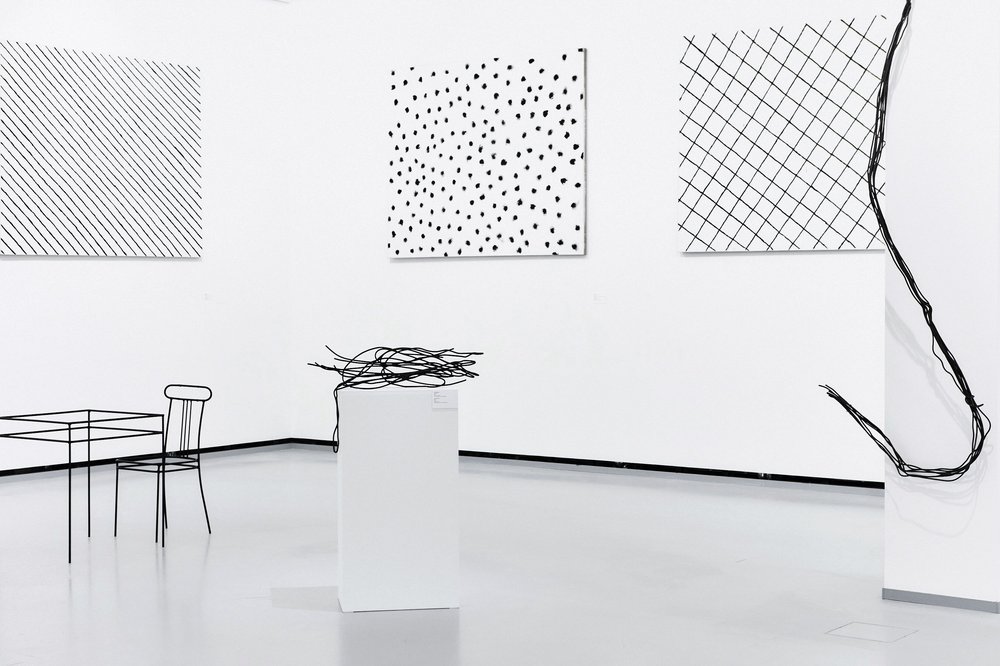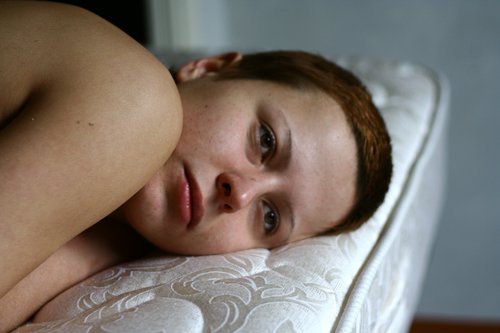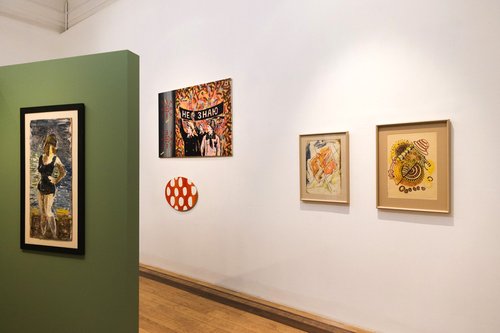The Artist of Piercing Edges: Zholud’s Posthumous Retrospective in Moscow

Anya Zholud. Inhale Exhale. Exhibition view. Moscow, 2025. Photo by Anna Ekomasova. Courtesy of Multimedia Art Museum, Moscow (MAMM)
An exhibition of Anna Zholud’s work at the Multimedia Art Museum, Moscow (MAMM) offers a penetrating glimpse into the late artist’s life and practice. Spanning two floors, this retrospective traces her tragic, philosophical engagement with art and the human condition. Art critic and curator Sergey Khachaturov examines how the show mirrors Zholud’s dramatic creative journey.
In what is surely the most comprehensive retrospective of the legacy of artist Anna Zholud (1981–2025) at the Multimedia Art Museum, Moscow, visitors can finally appreciate the full complexity and wise philosophical essence of her art. Having had the fortune to collaborate and create joint projects with Anna Zholud, when I think of her several striking images come to mind which conjure up the early Russian avant-garde in particular the so-called ‘Amazons of the Avant-Garde’, female artists who created a new visual language in design, everyday life, and culture. In the early Soviet era these determined, energetic women, namely Varvara Stepanova (1894–1958), Nadezhda Udaltsova (1886–1961), Alexandra Exter (1882–1949), Liubov Popova (1889–1924), Olga Rozanova (1886–1918) examined daily life and existence, treating their work like engineers handling project blueprints. Anna Zholud seems to have inherited this idea: art as a grand engineering project. This purposeful essence of hers was clearly visible in everyday communication.
Another image that emerges is post-war avant-garde or modernism, or the second avant-garde, referring to unofficial circles of artists, such as Mikhail Roginsky (1931–2004) and Yuri Zlotnikov (1933–2022), whose complex understanding of minimalism and abstraction was deeply embedded in the existential experience of Soviet life in the late 20th century. Anna Zholud seemingly unites the irreconcilable – the great, ideal engineering project of life as its arc stretched through the last century. Look at her furniture, hollow constructions with frames – these are the foundations of existence on which all our being is anchored.
On one hand, it represents the mechanism, the conveyor belt of life inherited from the avant-garde and constructivists; on the other, it carries trauma, tragedy, and a fracture within itself. This trauma defines her personal biography, as the artist suffered from severe mental illness and ultimately passed away in a psychiatric hospital. At the same time, it echoes the outcry, the call for help that post-war modernism bequeathed. This is the very modernism that coincided with American minimalism and pop art but maintained a fundamentally different character.
When observing exhibition spaces like art salons, or outpatient rooms and clinics constructed by Anna Zholud from metal rods, one recalls Sol LeWitt (1928–2007) or Donald Judd (1928–1994), who emphasised object identity dissolution. Their works deliberately demonstrate the disinterest of objects in serial production, where uniqueness is absent – a trait both honest and advantageous. On the other hand, Roginsky’s still lifes and domestic scenes come to mind, along with Zlotnikov’s abstractions that seem to adapt the patterns of 1960s and 1970s Soviet panel flats, integrating complex systems with cybernetics, reflecting a unique Soviet experience of abstraction.
The theme of personal experience and the biography of an object torn from its context transforms it into a mould of the soul that created it. This, I believe, is a critical theme Anna Zholud inherits from modernists of Soviet underground art.
The exhibition highlights three leitmotifs. The first is her framelike furniture, the piercing edges of everyday, seemingly cosy objects that become alienated and bristle like daggers. Here one recalls the existentialist tradition via Camus and his characters who, before execution, suddenly understand how hostile the world has become – the very commonplace world that should have been tamed but, instead, stings and cuts. This tradition can also be traced through Russian art, for instance, in Pavel Fedotov’s (1815–1852) later works when mental illness undermined the artist. Whereas early in Fedotov’s paintings, countless details of everyday life were friendly and helped express the owner’s personality with humour, in late paintings such as ‘Encore, Once More, Encore!’ (1852) a feverish consciousness floods the canvases with an uneven scarlet light, turning every object into something alien, estranged, and ghostly. Anna Zholud attracts allies from this great romantic tradition.
The second leitmotif is abstraction, an experience that opposes many Western European abstract art ideas. Rather, it aligns with Soviet unofficial art, much like Roginsky’s tile motifs and parquet floors, which seem to represent scratches and splinters on one’s consciousness.
The third leitmotif is the word. For Anna, words also cry out, plead for help, sometimes desperate and filled with existential longing. Her words correspond, in my opinion, to the use of words in Erik Bulatov’s (b. 1933) paintings and the poetry of Vsevolod Nekrasov. Here again we turn our gaze to our own Russian tradition of poetry in unofficial art.
Overall, the exhibition is arranged such that visitors move from one platform to another, experiencing various states of this drama – states of loss and solitude – within the corridors and folds of space. The niches, white walls, and even the framelike supports for stools all contribute to a total installation. It seems to me that one of the key themes of the exhibition is a certain archive, assembled like a picture within a picture, like a frame within a frame. This archive is called Museum of Me, where we seem to leaf through various objects and images created over different years, becoming witnesses to how the artist’s memory is gathered and constructed as an action within an action. In other words, it is a kind of scenography of her own life and creativity. In this case, her art, her material world, her objects – devoid of surfaces but becoming frames, existential frameworks of her life – seem very eloquent, as they ultimately present us with a self-portrait of the artist herself.
The exhibition is remarkably powerful, coherent, and meticulously crafted. In these small fragments – scratches, wounds, and lived experiences – we feel as if we are conversing candidly and honestly with Anna Zholud, remembering her as a living interlocutor despite her absence.
In this way, the exhibition reveals how emotionally charged and empathetic abstract, alienated art can be, and how minimalism and conceptual design can take on a surprisingly strong energy of empathy and personal compassion.
Anya Zholud. Inhale Exhale
Multimedia Art Museum, Moscow (MAMM)
Moscow, Russia
27 September 2025 – 25 January 2026



















